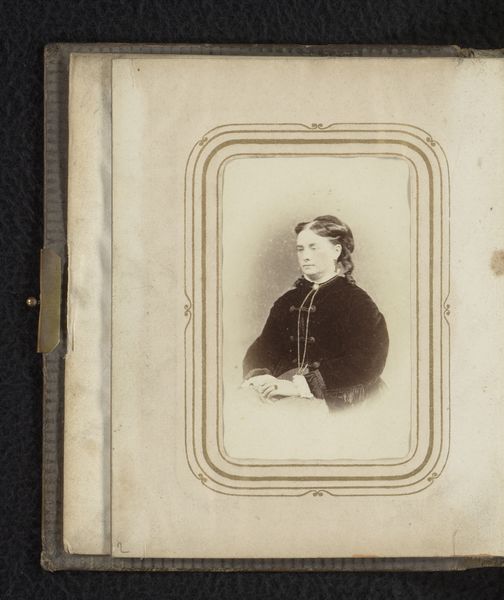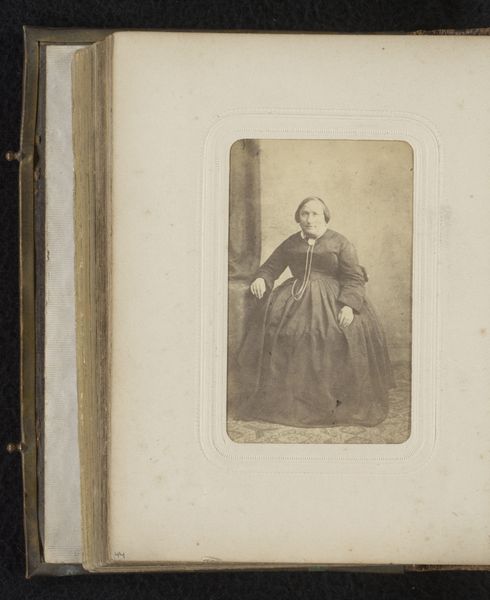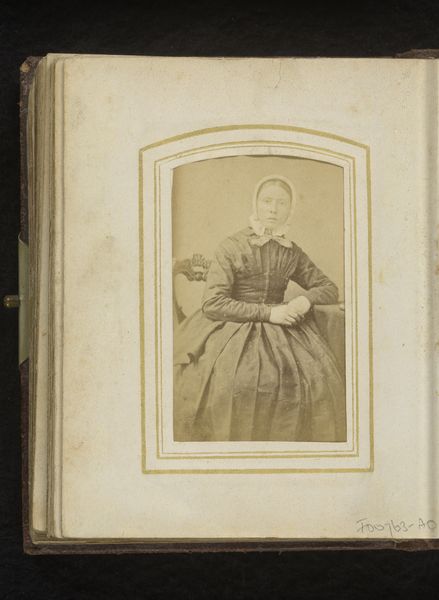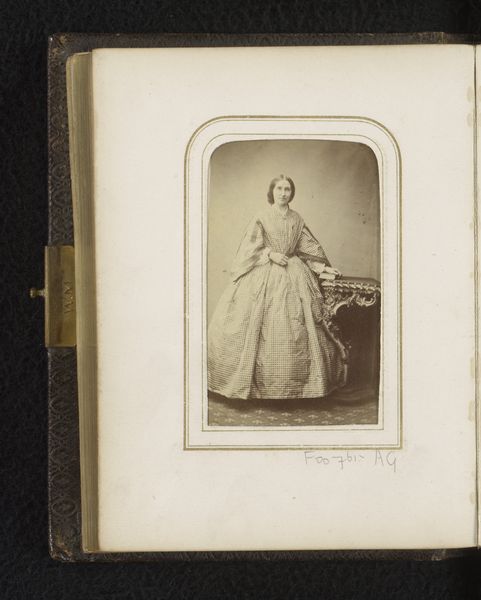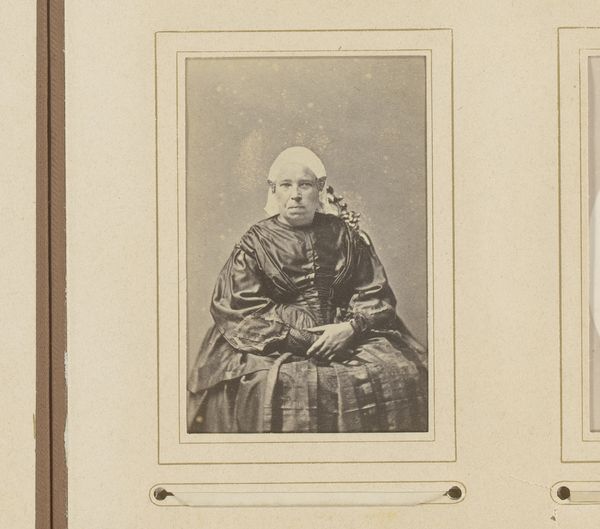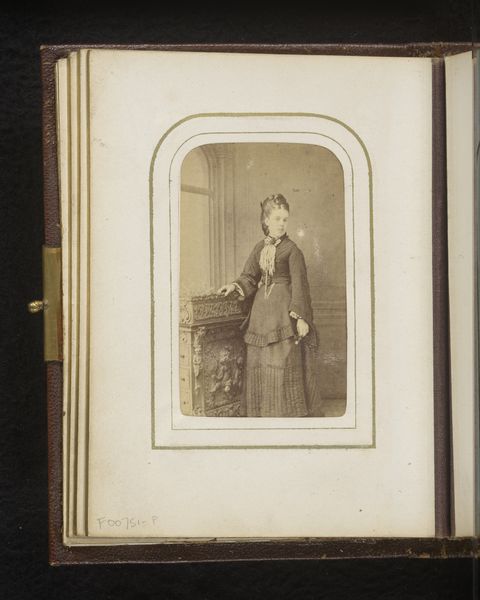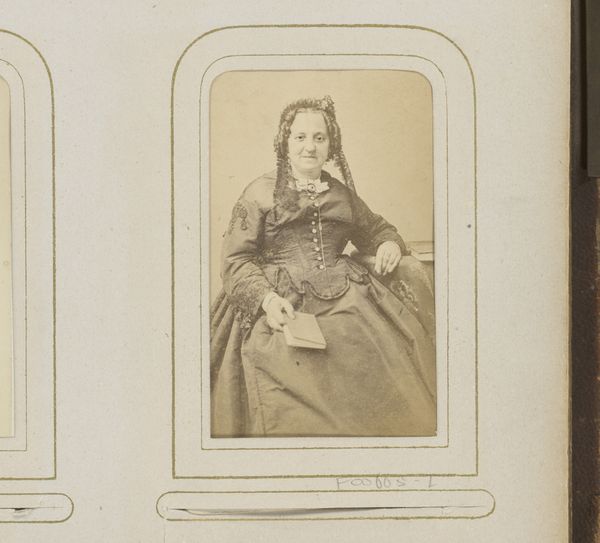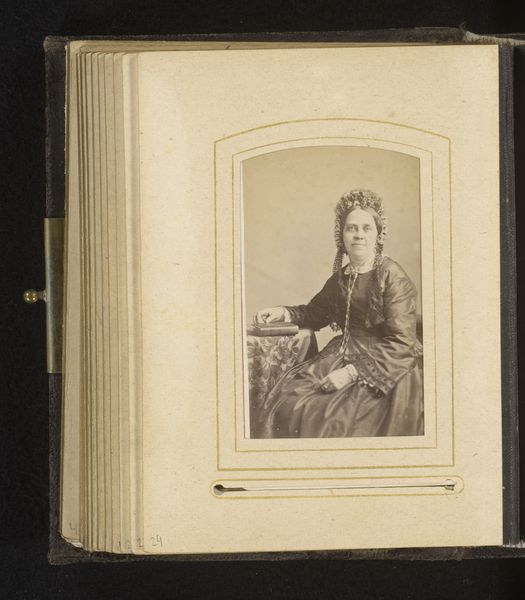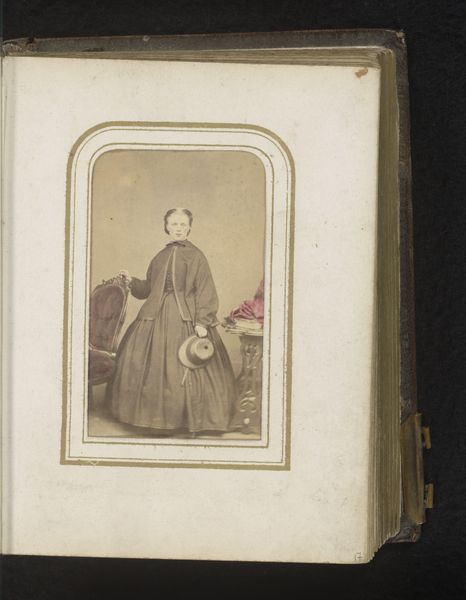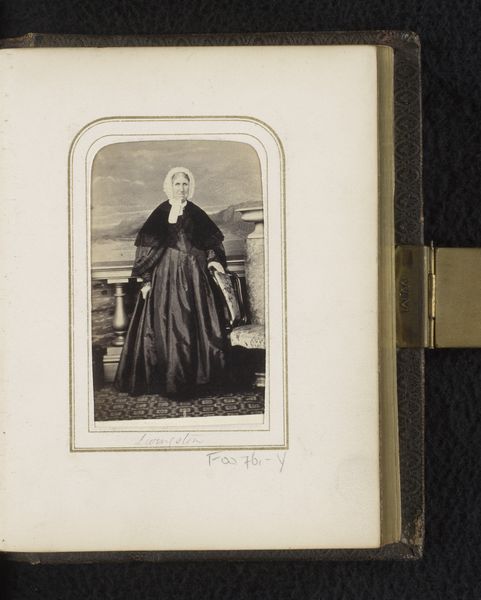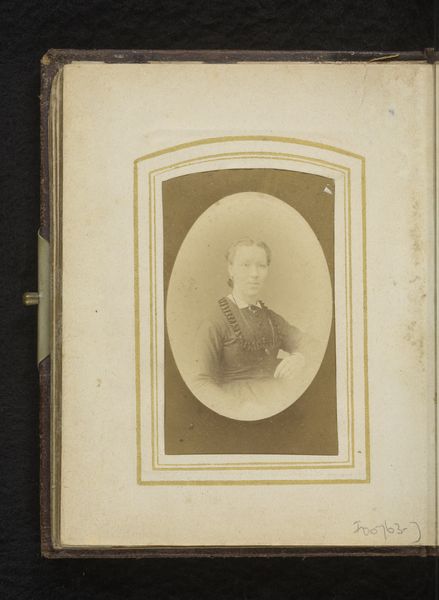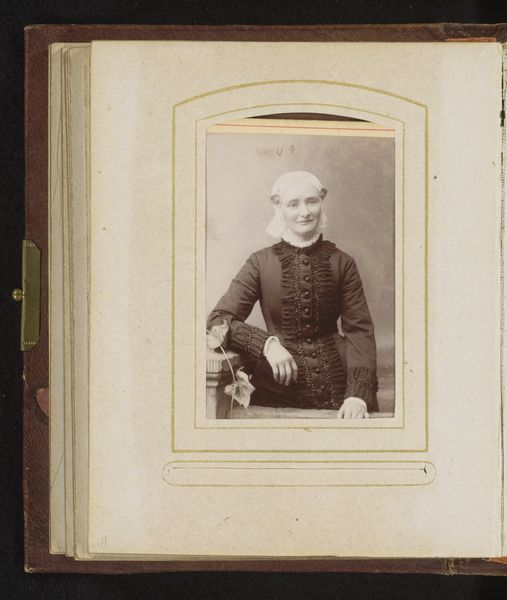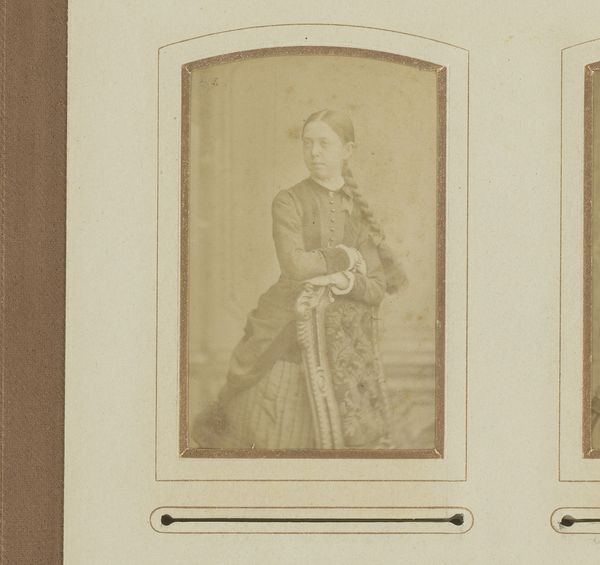
photography, gelatin-silver-print
#
portrait
#
16_19th-century
#
photography
#
coloured pencil
#
gelatin-silver-print
#
19th century
Dimensions: height 85 mm, width 53 mm
Copyright: Rijks Museum: Open Domain
Curator: This is a gelatin silver print, dating from somewhere between 1860 and 1900, titled "Portret van een zittende oude vrouw met muts"–or, "Portrait of a seated old woman with bonnet." The artist is listed as Frederick Argall. Editor: There’s such a gentle melancholy radiating from this portrait. The soft greys and browns lend an air of quiet contemplation, don’t you think? Curator: Absolutely. But I see something more complex than melancholy. Consider the era: photography was becoming accessible, yet portraiture remained a significant performance. The woman’s attire—the bonnet, the dark dress—speak of a deliberate presentation of self. How does this performative aspect speak to constructions of age and gender in the late 19th century? Editor: The bonnet itself is a powerful symbol. Beyond mere head covering, it signified modesty, respectability, often widowhood... a whole lexicon of societal expectations contained in lace and ribbons! And the stern set of her mouth—it evokes not just submission but quiet resilience. Curator: Exactly. I read the faint card held delicately in her fingers, alongside the beaded purse, as signifiers of potential economic independence or at least careful stewardship of domestic resources. We need to ask how such details challenged or reinforced gender roles of the era. Editor: It’s striking how timeless certain symbols remain. A matron’s dress is an emblem for her authority; while the photograph offers some access, the purse and the card denote an economic and social history of independence over her private estate. The entire mise-en-scène tells a deeper narrative about status. Curator: Indeed, her direct gaze is incredibly engaging. Is it challenging the viewer? Submitting? The layers are rich for exploration if you also think of that era of photography and portraiture. Editor: Looking at it again, the portrait evokes a profound sense of dignity in aging. Curator: For me, seeing her embodied experience and all the questions about gender, age, and self-representation the portrait poses – that’s what makes this artwork so thought-provoking. Editor: I agree. It prompts us to question, reinterpret, and ultimately honor the often-unseen narratives of women across time.
Comments
No comments
Be the first to comment and join the conversation on the ultimate creative platform.
